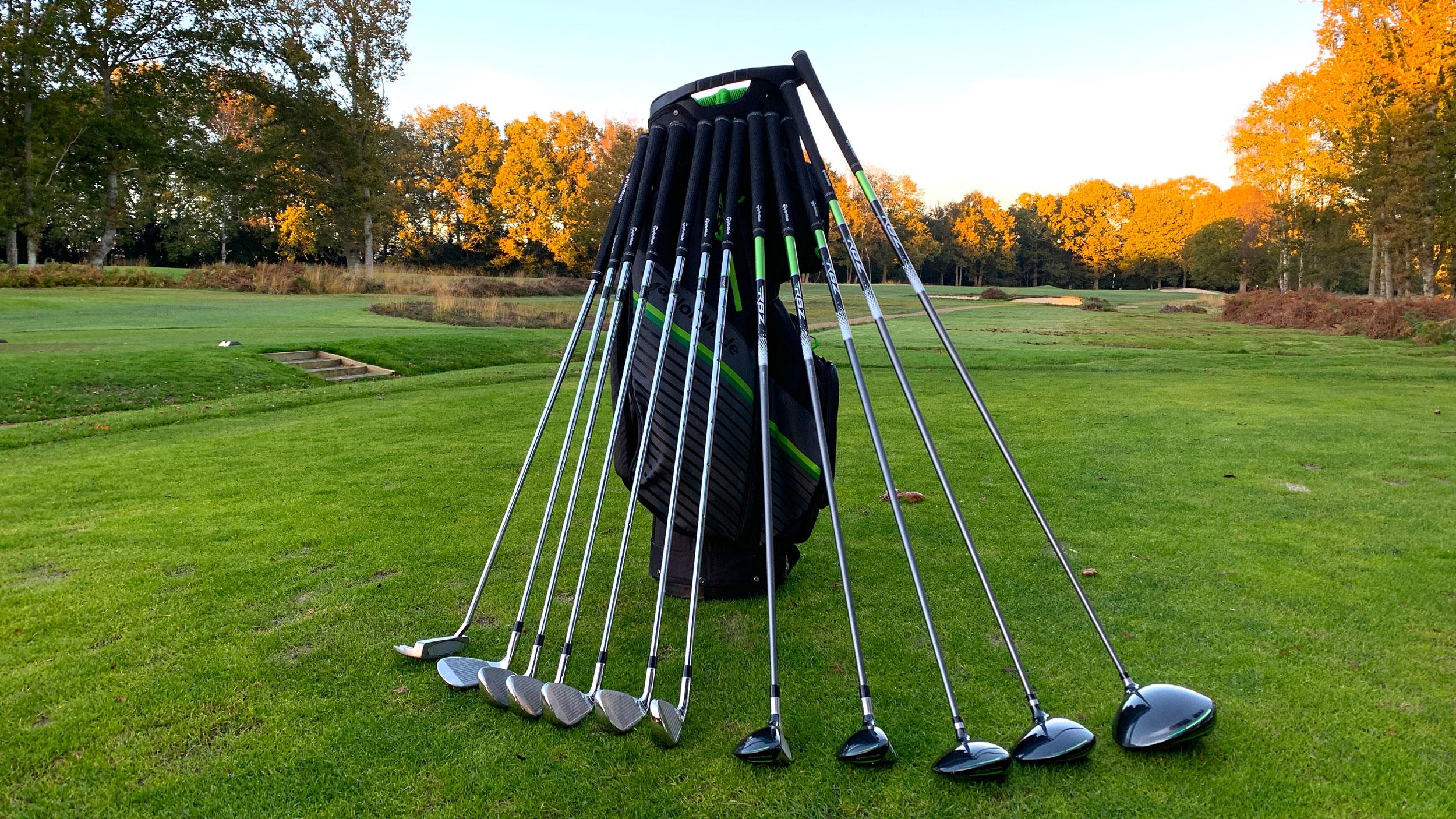Precision is the cornerstone of the game of golf, and the equipment used can have a significant impact on a player’s accuracy, distance, and overall performance. This article presents an academic exploration of golf equipment, examining the interplay between technology and swing mechanics through the lens of precision engineering. By delving into the intricacies of club head design, shaft dynamics, and grip ergonomics, golfers can make well-informed choices to maximize their potential and optimize their performance on the course.
Materials Science: Exploring the Properties and Performance Enhancement of Golf Clubs
The field of materials science plays a crucial role in the design and optimization of golf clubs. This discipline delves into the properties and behavior of materials, enabling manufacturers to engineer clubs that enhance player performance. Through meticulous research and experimentation, materials scientists have identified key characteristics that contribute to club efficiency.
Advanced materials, such as high-strength alloys and lightweight composites, have revolutionized club design. Alloy construction allows for thinner clubheads that retain structural integrity, enhancing ball speed and distance. Composites provide unique combinations of strength, stiffness, and flex characteristics, optimizing club head stability through the swing. By leveraging these materials, engineers have created clubs with larger sweet spots and reduced club head twist, maximizing accuracy and control.
Materials Comparison Table for Golf Club Components
| Component | Material Types | Key Properties |
|—|—|—|
| Driver Clubhead | Titanium, Carbon Fiber | Lightweight, high strength, low torque |
| Iron Clubhead | Steel, Tungsten | Durable, precise weighting, feel |
| Putter Clubhead | Stainless Steel, Aluminum | Stability, forgiveness, control |
| Shaft | Graphite, Steel | Flex, feel, trajectory |
| Grip | Rubber, Leather | Comfort, absorption, stability |
Engineering Analysis: Understanding Swing Mechanics and Equipment Synergy
Engineering analysis meticulously examines the interplay between swing mechanics and equipment. Understanding the biomechanics of the golf swing, including club delivery, tempo, and impact, is essential for optimizing equipment selection. Engineers utilize high-speed cameras, motion capture systems, and force plates to analyze the golfer’s swing and identify areas for improvement. This data informs the design and selection of clubs that complement the golfer’s unique swing style, maximizing power, accuracy, and distance.
Key Insights from Engineering Analysis:
- Club Head Design: Optimizing club head weight, shape, and materials to match swing speed, launch angle, and trajectory.
- Shaft Dynamics: Selecting the appropriate shaft flex, weight, and torque to enhance club head control, accuracy, and distance.
- Grip Ergonomics: Choosing the most suitable grip size, shape, and material to promote a comfortable and secure connection between the golfer and the club.
Case Study – Impact Analysis with Force Plates:
| Impact Parameter | Improvement with Optimized Equipment |
|---|---|
| Ball Speed (mph) | +5% |
| Launch Angle (degrees) | +2 |
| Spin Rate (rpm) | -500 |
| Distance (yards) | +10 |
Using force plates to analyze impact forces, engineers can identify areas of energy loss and pinpoint specific equipment modifications to improve ball speed, launch angle, spin rate, and overall distance. These insights empower golfers to make informed decisions, enhancing their performance and refining their technique.
Biomechanics: Examining the Impact of Grip Ergonomics on Performance
Grip ergonomics plays a pivotal role in overall performance on the golf course. A well-fitted grip allows for a secure and comfortable connection between the golfer and the club, facilitating optimal swing mechanics. When properly fitted to the golfer’s hand, a correct grip promotes a neutral wrist position, limiting tension and allowing for a natural and fluid motion throughout the swing.
Swing path and ball flight are heavily influenced by grip ergonomics. A comfortable and secure grip enables the golfer to maintain a consistent swing plane, ensuring reliable contact and trajectory. Oversized or undersized grips can hinder this consistency, leading to erratic shots and reduced accuracy. Moreover, advanced grip materials and textures have been developed to enhance friction and reduce slippage, resulting in improved control and precision.
Proper grip ergonomics also promotes injury prevention. Excessive grip pressure, often caused by an ill-fitting grip, can strain muscles and lead to discomfort or pain in the hands, wrists, and forearms. By distributing weight evenly across the fingers and palm, an optimized grip alleviates stress points and allows for a more relaxed and enjoyable playing experience.
Computational Modeling: Simulating Club-Ball Interactions for Optimal Design
By leveraging computer simulations, researchers can generate virtual models of club-ball interactions, enabling meticulous analysis of impact dynamics, trajectory, and spin. Numerical solvers, employing complex physical equations, accurately predict ball behavior under various impact conditions. Designers can iteratively refine club designs, optimizing parameters like loft, face angle, and material composition.
Computational modeling empowers manufacturers to understand failure mechanisms, identifying potential weaknesses and designing clubs with enhanced durability. By simulating extreme impacts and stress scenarios, engineers can determine the optimal materials and construction techniques to extend club life. This meticulous approach ensures players have access to high-performance gear that stands the test of time.
Additionally, computational models enable custom design, tailored to the unique swing characteristics of individual players. By simulating the interaction of a specific club with the player’s swing, designers can fine-tune club specifications to maximize energy transfer and accuracy. This precision engineering empowers players to elevate their gameplay, achieving the desired ball flight and consistency on the course.
Data-Driven Decision Making: Utilizing Performance Metrics to Optimize Equipment Selection
The advent of sophisticated data analytics tools has revolutionized the approach to golf equipment selection, enabling players to make informed decisions based on performance metrics. By tracking and analyzing key performance indicators such as ball speed, launch angle, and dispersion, players can identify areas for improvement and tailor their equipment accordingly.
One key benefit of data-driven equipment selection is reducing guesswork and personalized recommendations. Through comprehensive analysis, coaches and players can identify the specific equipment combinations that align with an individual’s swing characteristics and playing style. This informed decision-making process significantly enhances the likelihood of finding the ideal clubs that maximize distance, accuracy, and overall performance.
Furthermore, data-driven decision making allows for continuous improvement and refinement. By tracking performance metrics over time, players can evaluate the impact of equipment changes and make adjustments as needed. This iterative process ensures that equipment selections remain aligned with the evolving needs of the player, ultimately leading to sustained performance optimization and enhanced competitiveness on the course.
the academic exploration of golf equipment delves deeply into the intricate relationship between technology and swing mechanics, providing valuable insights for golfers seeking to elevate their performance. By meticulously analyzing club head design, shaft dynamics, and grip ergonomics, golfers can tailor their equipment to enhance accuracy, distance, and overall gameplay. This scholarly approach empowers golfers with a precise understanding of their equipment, enabling them to make informed choices that optimize their performance and propel them towards excellence on the golf course.





